Today’s job market is quite highly competitive and thus, retaining top talent has become more critical than ever. Smart organizations have been able to realize the long-term value of investing in thoughtful employee retention strategies. These strategies are quite essential not just only for maintaining productivity and reducing costs but also for building a strong company culture.
By the means of deploying a mix of intentional practices – such as employee engagement initiatives, flexible work policies, leadership development and recognition programs – businesses can enhance employee retention, implement effective workplace retention solutions and consistently improve employee retention across the board.
Why Employee Retention Matters
Employee turnover is quite costly. The financial impact of losing and replacing an employee can range from somewhere between 50% to 200% of their annual salary. Beyond direct costs, there are certain hidden impacts such as lost institutional knowledge, reduced morale and weakened team cohesion that come into play.
In order to address these challenges, companies are prioritizing employee retention strategies to keep high performers engaged and satisfied. It’s not just about plugging leaks – it’s also about creating a workplace where people genuinely want for the reasons of staying and growing.
Core Pillars for Enhancing Employee Retention
Recognition and Rewards
Feeling valued is quite fundamental to attain job satisfaction. Employees who are recognized on a regular basis are quite likely to be more engaged and less inclined to leave. Public acknowledgments, milestone celebrations and peer-to-peer recognition contribute significantly to the process of building company loyalty.
Embedding recognition into company culture is quite a powerful way of enhancing employee retention and definitely should be part of every organization’s playbook of employee retention strategies.
Career Development and Growth
One of the most effective HR strategies for retention is nothing but offering growth opportunities. When employees are able to see a clear career path and know that their company is, to some extent, invested in their development, they’re mostly more likely to stay and continue with their journey.
Structured learning programs, mentorship, skill development courses and internal promotions are all great examples of workplace retention solutions that are aimed at improving employee retention.
Flexible Work and Well-Being
Flexibility is not just simply a trend – it’s become an expectation. Remote work options, flexible hours, mental health support and wellness programs are now quite integral to employee retention strategies.
Organizations that work in promoting work-life balance and well-being tend to see higher engagement levels and are quite more successful in enhancing employee retention while also helping in order to reduce employee turnover.
Manager Quality and Leadership
It’s often said that people tend to leave their managers, not their companies. This puts a spotlight on leadership development as a key focus in the field of retention best practices. Good managers are known for being empathetic, communicative and empowering to the individuals they work with.
Providing with ongoing leadership training and coaching can contribute to improving manager effectiveness and is central to workplace retention solutions that foster stronger employee-manager relationships.
Company Culture and Communication
The culture is what defines how employees experience the workplace on a daily basis. Open communication, inclusivity, shared values and transparency contribute significantly to the process of building company loyalty.
Companies that cultivate a strong, positive culture are more likely to be able to enhance employee retention and create an environment where employees feel they belong and can thrive.
Retention Best Practices Table
| Area of Focus | Description |
| Recognition Programs | Boosts morale, affirms employee value |
| Growth Opportunities | Offers development and career path clarity |
| Flexible Work Arrangements | Promotes well-being and reduces burnout |
| Strong Leadership | Empowers employees through empathy and feedback |
| Culture and Communication | Builds trust, belonging, and employee engagement |
Implementing Effective Workplace Retention Solutions
A successful retention plan requires more than just simple isolated perks or one-off programs. In order to create long-lasting impact, organizations must have integrations with various workplace retention solutions into a unified strategy.
Start with Data
The beginning can be marked by the means of reviewing exit interviews, engagement surveys and turnover reports. Identify exactly where issues exist and prioritize areas that are needing immediate attention. This diagnostic step is quite fundamental in order to launch effective employee retention strategies.
Focus on the First 90 Days
The onboarding period is somewhat critical. Early engagement and support during this phase often enables long-term retention. Personalized welcome experiences, clear expectations, mentorship and structured training tend to help new hires feel connected and committed from day one.
Introduce Feedback Loops
Two-way communication is also quite vital. Regular one-on-ones, pulse surveys and anonymous feedback tools empower employees to be able to voice concerns and offer ideas. Leaders should act on feedback in order to demonstrate that employee input is valued – boosting trust and enhancing employee retention.
Offer Career Coaching
Ongoing career conversations and mentorship should be a staple. Instead of waiting for annual reviews, encourage proactive dialogue about skills development, goals and future roles. These conversations tend to directly support HR strategies for retention and further help improve employee retention through clarity and encouragement.
Create Recognition Routines
Recognition should be quite frequent, timely and aligned with company values. Whether through digital platforms, town halls, or team meetings, spotlighting achievements assists employees to appreciate and motivates others.
This practice plays a pretty vital role in employee engagement techniques, contributes to reducing employee turnover and strengthens team morale.
Facts
- Companies with effective recognition programs have up to 31% lower voluntary turnover.
- Employees who feel heard are 4.6 times more likely to feel empowered to do their best work.
- 87% of millennials say professional development is very important in deciding whether to stay at a job.
- Flexible scheduling has been linked to a 25-50% increase in employee satisfaction.
- Poor management is one of the top three reasons for employee exits.
Enhancing Employee Retention Through Leadership and Purpose
Purpose-driven work is growing increasingly important. When employees believe in their organization’s mission and values, they are somewhat more engaged and committed. Aligning roles with the broader mission also contributes to building loyalty for the company.
Equipping leaders to be able to connect the dots between daily tasks and organizational impact helps employees find deeper meaning in their work. This connection is central in order to enhance employee retention.
Moreover, great leaders are approachable and open to feedback. Coaching managers to support teams with empathy, clarity and accountability is one of the most critical HR strategies for retention that companies can implement.
Conclusion
Employees are not just simple resources, but they are more the very core of organizational success. In order to thrive, companies must go beyond generic benefits and focus on meaningful employee retention strategies.
Whether it is through robust employee engagement techniques, personalized development plans, flexible policies, or better leadership, there are quite a many ways present to enhance employee retention effectively. By consistently applying targeted workplace retention solutions, businesses can improve employee retention in ways that are both measurable and sustainable.
Prioritize listening. Recognize consistently. Offer room to grow. And always lead with empathy. These are the cornerstones of reducing turnover, improving morale and ultimately, building company loyalty that lasts.
Frequently Asked Questions (FAQs)
Q1: What’s the difference between retention and engagement?
A: Retention focuses on keeping employees from leaving, while engagement refers to how emotionally committed they are to their work. Both are closely linked and effective employee engagement techniques directly support retention efforts.
Q2: How long does it take to see results from a retention strategy?
A: Most organizations start to notice results within 3 to 6 months of implementing consistent workplace retention solutions, especially if those changes are tied to leadership, culture and employee development.
Q3: Do smaller companies benefit from employee retention strategies?
A: Absolutely, smaller companies do benefit from employee retention strategies. In fact, smaller companies often see faster impact because they can implement changes more quickly and personalize their approach to enhancing employee retention.
Q4: Are flexible work policies essential?
A: In today’s work environment, flexibility is mostly expected. Offering remote options, flexible hours, or hybrid setups can significantly improve employee retention and reduce stress.
Q5: Is recognition really more effective than bonuses?
A: Recognition provides ongoing emotional value and can be more impactful than occasional monetary bonuses. When integrated well, it supports both retention best practices and employee engagement techniques.
Related Blog:
Dry Promotion: the Changing Landscape of Employee Recognition




